

WHITE PAPER
Workforce Pressures Are Rising—
Here’s How to Fortify Your Pharmacy Enterprise with Smarter Purchasing
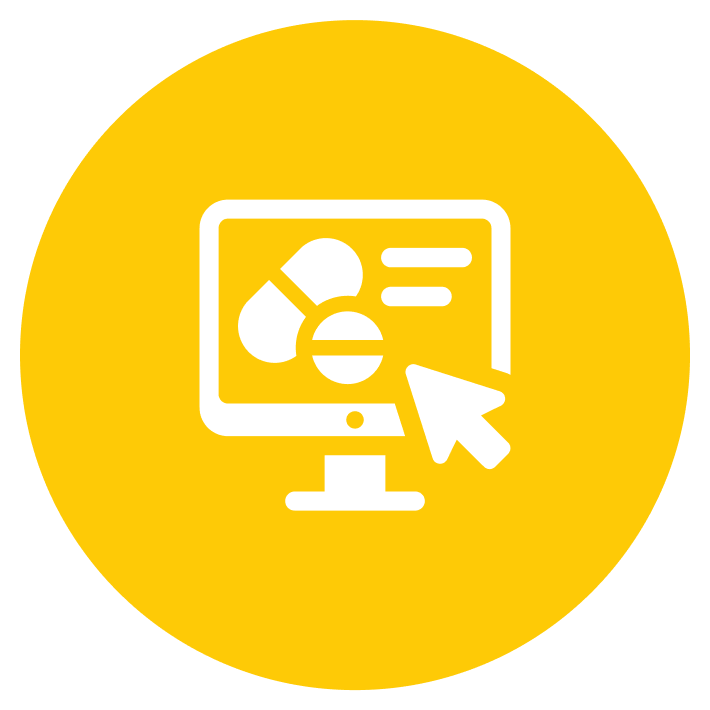
Download the white paper
Complete this form to get the PDF version of our white paper.


This white paper will examine both the impact and potential risks of these shortages and how health system pharmacies can shield themselves through enhanced purchasing.
Health system pharmacies are being asked to do more with less—managing drug shortages, complex purchasing rules and growing clinical responsibilities—all while facing historic staffing challenges. But there’s a clear opportunity hiding in plain sight: Smarter, more strategic pharmacy purchasing can ease administrative burdens, empower teams and improve performance across the enterprise.
Rising Demand on Pharmacy Staff
An aging population with higher rates of chronic disease is driving a greater demand for skilled pharmacy professionals. This is in addition to the increased need for prescription drugs as patients’ medical profiles grow more complex while their access to insurance coverage fluctuates in light of new policy decisions.
In hospitals and other health system settings, pharmacy professionals face challenges such as:
- Increased complexity of medication management
- Higher demand for clinical disease management
- Greater responsibility in assuring quality throughout the drug use process
- Prevention of medication errors
- Increased clinical involvement to help offset nursing shortages
- Need to control drug spend
- Navigating ever-increasing drug shortages
In health systems, the pharmacy is one part of a much larger clinical environment of physicians, nurses, advanced practitioners and other providers. In some cases, and especially amidst nurse shortages, pharmacy staff may be called upon to work even closer to the bedside. For example, they may need to be available to advise patients about drug information, answer medication questions or consult with clinical teams about drug options and treatments.
Pharmacy teams face rising pressure from drug shortages and clinical demands.
By removing repetitive tasks, health systems free up pharmacy staff to focus on clinical excellence, safety and compliance. This sends a powerful message: Their time matters, and their expertise is valued.
The demand for—and the demands placed on—pharmacy staff have increased. But health systems and hospitals face severe pharmacy staff shortages. A survey of pharmacy administrators conducted by the AmericanSociety of Health-System Pharmacists (ASHP) found turnover rates of at least 21% in 2021, with nearly one in ten respondents noting they had lost 41% or more of their technicians.
There’s also a troubling trend in the professional talent pool. The University of Washington’s Center for Health Workforce Studies reported a 35% reduction in applications to pharmacy schools and colleges over the last decade. The average enrollment in pharmacy schools dropped by nearly 60% between 2008 and 2017. Combined with fewer pharmacy school graduates, health systems struggle to find candidates willing to work the extended hours, late shifts and weekends—or to engage directly with patients. Pharmacy worker shortages in rural and other underserved areas also present unique challenges.
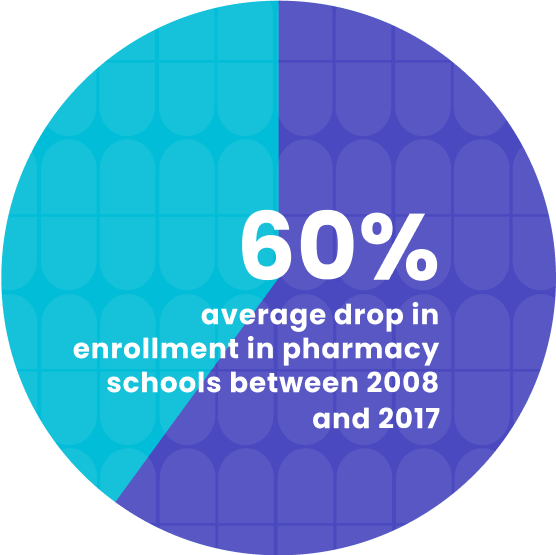
The Impact of Pharmacy Staff Shortages on Patients
These staffing shortages force pharmacy team members to constantly re-align their focus throughout the day. Multitasking leads to divided attention, low energy and difficulty concentrating on tasks. Health systems risk potential errors that affect the quality of care and safety.
With all the demands placed on teams, pharmacies struggle to keep up and avoid burnout among team members. Burned-out teams create more errors, safety concerns and pharmacy staff shortages. The resulting extra stress puts further pressure on teams, who may ultimately leave and worsen the cycle.
The Burden of Pharmacy Purchasing on Health Systems
Whether at a health system, retail pharmacy, long-term care facility or combination setting, responsibilities often extend beyond what’s taught in pharmacy schools. Among other administrative duties, purchasing places a huge burden on staff time and focus.
Pharmacy purchasing is complex. Finding the right products at the best prices while juggling other responsibilities is even more daunting. Facing rising drug prices and drug shortages, health systems must design strategies to maximize savings. Some systems convene standing committees exclusively for this purpose. But the most successful strategies require consistent execution. Many health systems know how to optimize pharmacy purchasing, but implementation can be challenging at the ground level for pharmacy teams. Adhering to a purchasing strategy adds more work and increases complexity and stress in their role, leaving room for costly purchasing errors.
Removing administrative burdens like tedious, time-consuming purchasing is a significant step toward high-reliability healthcare: delivering excellent clinical care and service every time for every patient. Smarter purchasing doesn’t just reduce workload; it repositions pharmacy teams as strategic contributors.
Pharmacy school enrollment dropped 60% worsening staff shortages.
Purchasing staff lose time and energy to this opaque process and still miss out on the best purchasing options. There are simply too many catalogs, item listings and purchasing interfaces for any pharmacy worker to compare manually.
5 Ways Health Systems Pharmacies Can Cope with Pharmacy Staffing Shortages
Embracing technology and streamlining processes enables pharmacy teams to manage their workload better. Technology can’t replace staff, but it does support their work and ease their burden. Here are five crucial strategies to reduce the impact of rising pharmacy staff shortages for health systems.
Optimize Pharmacy Purchasing
The pharmacy purchasing ecosystem lacks transparency. As a result, it’s:

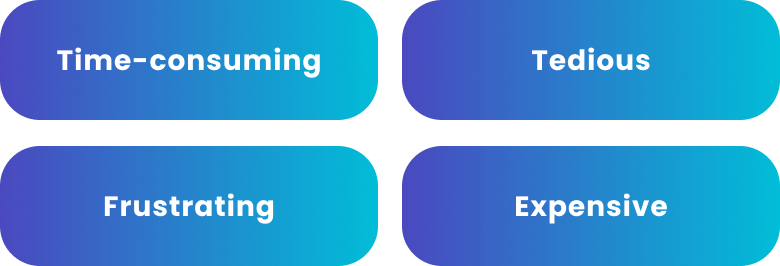
Pharmacy purchasing for health systems is even more complicated. In addition to sourcing products from their primary vendor, secondary vendors and direct from manufacturers, these systems must also manage 340B, WAC and GPO accounts while comparing products based on price, package size, type and other variables.
Smaller teams multitask constantly, so health systems must automate wherever possible to reduce manual workload. For example:
- Integrating all vendor catalogs based on NDC or equivalent across all sources
- Analyzing all purchasing options based on price, type, package, cost to change, compliance tiers, availability, 340B eligibility and other variables
- Providing a single platform for purchase orders across all sources
- Ensuring DSCSA compliance is integrated into the receiving process
- Verifying receipt of items from all sources against PO and invoice
The right technology will combine all these features while integrating with existing processes and systems. An automated pharmacy purchasing solution should streamline work while optimizing the health system’s purchasing process, driving savings and efficiency.
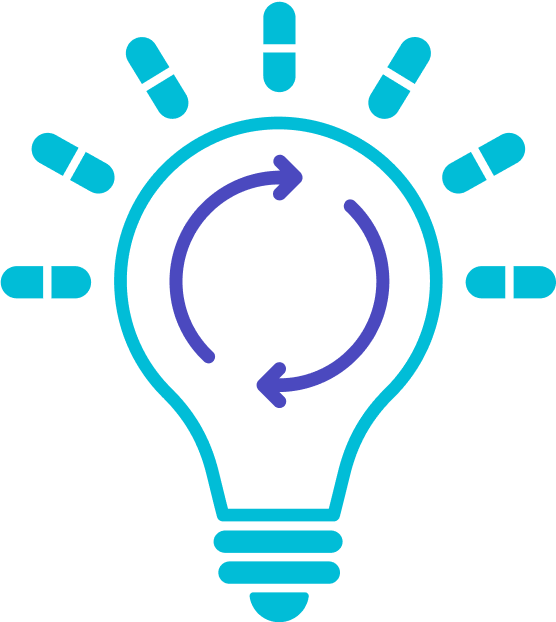
Pharmacies need backup sourcing if a wholesaler’s fill rate dips from 96% to 70% overnight, as we saw with GLP-1s earlier this year.
Consolidate Procurement
Pharmacy team members should be able to efficiently perform specific tasks daily. Smaller health systems may even rely on a single purchaser for all of their procurement. This team member is the sole keeper of all the knowledge and expertise needed to perform that task daily. When this highly trained pharmacy worker becomes ill or wants to take time off, the rest of the team struggles. Even with the best manual documentation, knowledge gaps or exceptions remain; you simply can’t download an employee’s brain.
Maintaining centralized data reduces stress and time that pharmacy teams otherwise lose scrambling to track down pertinent information. This lowers costs, decreases interruptions in patient service, prevents errors and eases employee burnout.
Health system leadership also benefits from an integrated view of purchasing throughout the system. Simple reporting allows teams to manage multiple pharmacies and purchasers and align decisions. For example, one pharmacy may have opportunities for enhanced compliance while another may be meeting its targets.
Health systems must also use tools that ensure continuity with purchasing while providing a safety net against losing critical information. Data needs to be easily accessible to the entire team. When choosing the right pharmacy purchasing solution to manage data, health systems should think critically about the technology’s ability to:
- Recommend optimal drug products based on dynamic real-time data
- Analyze these recommendations based on the pharmacy’s purchasing history
- Track team members’ exceptions and rationale when substituting items
These measures will empower pharmacy teams to rely on easily accessible data (rather than memory or habit).
Streamline Pharmacy Workflows
There’s no shortage of purchasing tasks keeping health system pharmacy staff busy:
- Receiving products
- Verifying invoices
- Updating accounts payable
- Ensuring vendor compliance
- Submitting reimbursements
- Tracking rebates
- Following up on related requests and issues
Pharmacy workers are called upon to wear “many hats,” compounding the issues of time, tedium and burnout. Many of these tasks are far removed from what they learned in pharmacy school. Streamlining workflows and making the work easier helps staff return to “top-of-license” work.
Accounts payable integration, for example, seamlessly integrates purchase orders, invoices, deliveries, receiving and rebates. Staff can easily confirm receipt of the right products at the correct price and quantity and ensure payment of all invoices. They can also update GL, inventory and other operations in real time.
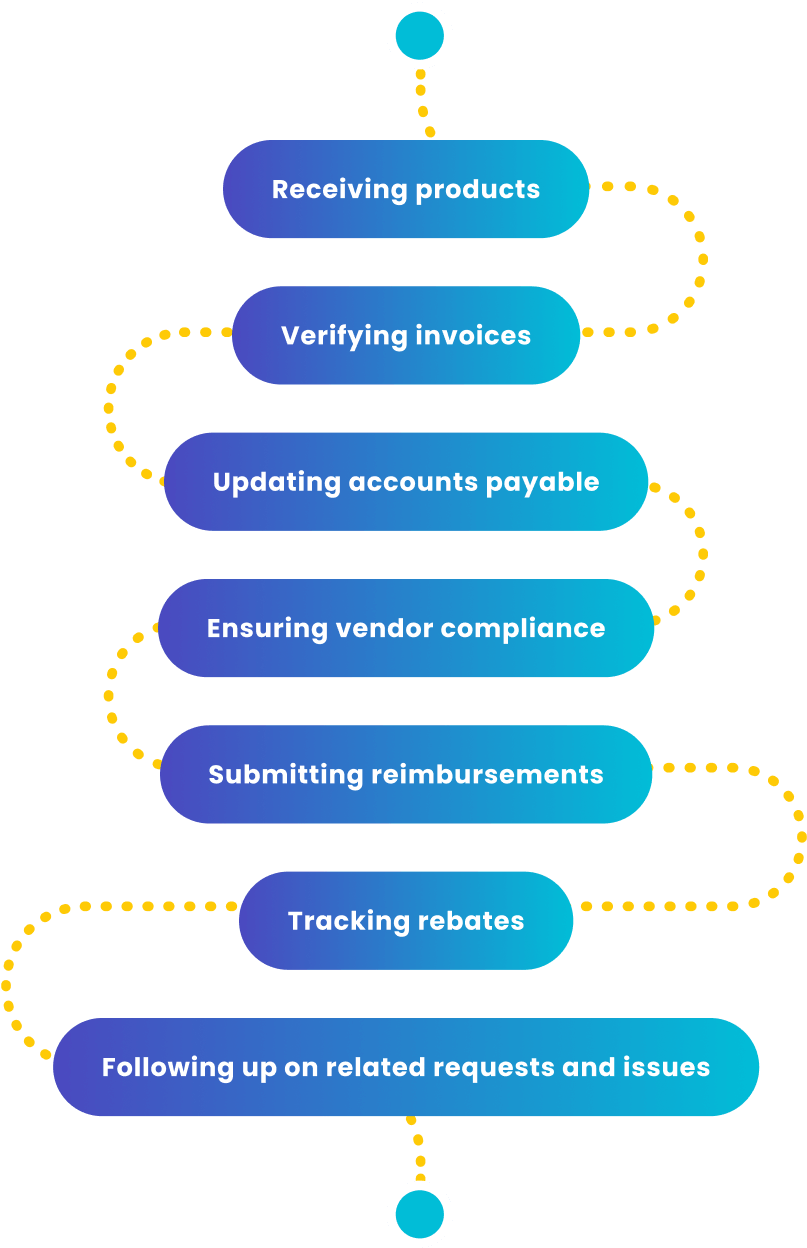
Streamlined workflows reduce burnout and help pharmacy staff focus on high-value clinical work.
To mitigate pharmacy staffing shortages, health systems must leverage technology that reduces time lost to non-clinical tasks and helps pharmacy staff work at the “top of their license.”
Integrating A/P with purchasing and combining all data into a single process provides several advantages to busy pharmacy team:
- Boosts efficiency
- Optimizes time management
- Ensures the right product, quantity and price
- Reduces rogue spending due to—
- Incorrect invoices
- Receiving wrong items
- Unexpected vendor substitutions
- Eliminates switching between systems
- Increases transparency into processes, reducing wasted time

Pharmacies should also consider solutions with mobile capabilities that enable staff to accomplish core tasks where the work is. Helping team members avoid the “hustle” between terminals and receiving areas saves them even more time while making the job easier.
Automate Inventory
Like purchasing, inventory is another critical function that health systems may leave up to a single team member. Without that pharmacy worker, that knowledge about usage, static NDCs and special orders is lost. There are too many variables to leave up to personal intuition.
With an automated inventory management process, the system tracks dispensing data, maintains min/max for hand quantities based on usage and replenishes items at the product group level. Integration with purchasing further streamlines the process and allows data-informed decisions at each step. Combined with a perpetual inventory that updates in real time, inventory works for teams (not the other way around).
Benefits of automated inventory management include:

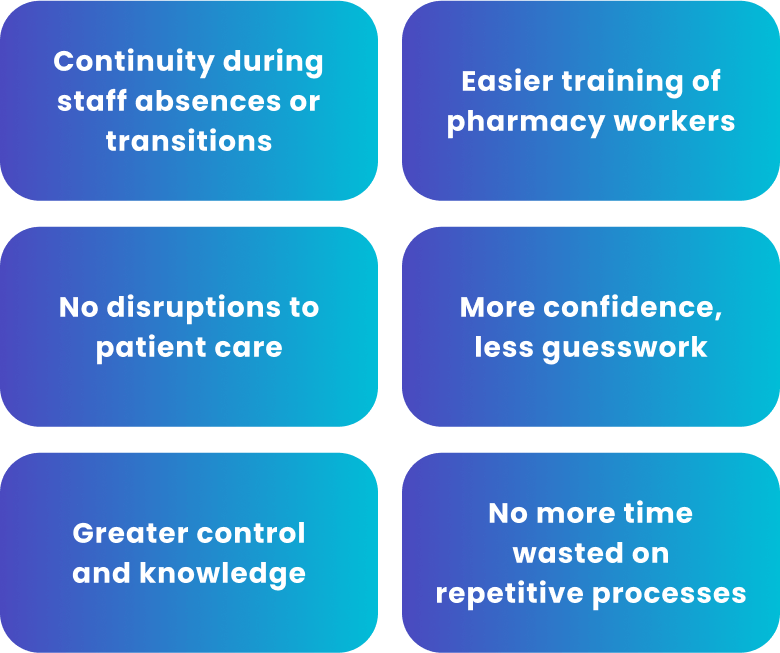
Health systems must also efficiently transfer items between locations, departments and other clinical areas. They’re responsible for securing the chain of custody from receiving through dispensing and tracking movement between locations. Larger health systems have even more “moving parts” to track during transfers. Automated transfers enable them to record each step as the system automatically logs transfers and other purchasing data. Integration with purchasing allows them to see which locations need replenishment and recommend items for transfer or returns to the manufacturer. This cuts back on spoilage and allows health systems to optimize inventory.
Automated inventory boosts control, cuts waste and ensures continuity —even when staff are out.
Empowered pharmacy teams deliver better outcomes. By removing administrative barriers, health systems retain top talent, safeguard compliance and free teams to focus on what matters most: patients.
With inventory and purchasing unified under a single solution, health system pharmacies can easily calculate the true value of their stock (instead of relying on multiple systems for each vendor or manually syncing different spreadsheets).
Balance Technology With Humanity
Not all technology is equal. Some programs consume hours of training time and leave pharmacies without direct support. Automation shouldn’t mean having to sacrifice interaction with a person. This creates more work for staff, takes away their sense of ownership and consumes more hours while adding further stress. When teams are forced to work around rigid tools, they lose more than time; they lose confidence in the systems meant to support them. The right technology should amplify the value of clinical professionals, (not constrain it). Technology cannot replicate professionals’ clinical knowledge, but the right technology will empower the team.
What does the right technology look like? Indicators of the right solution include:
- Pharmacy staff feel empowered (not replaced)
- Team members appreciate leadership selecting a solution tailored to their needs
- Their job becomes easier (and they’re not doing additional work)
- They feel less burnout and experience greater job satisfaction
- Pharmacy workers are inclined to stay longer
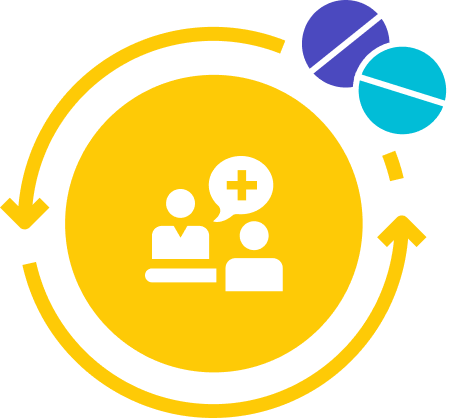
When choosing a solution, pharmacies should find technology rooted in flexible customization, intelligent automation and intuitive design. It’s also crucial to remember that, beyond finding purchasing software, pharmacies should have a knowledgeable and trusted partner behind that technology.
Summary
Pharmacy staffing shortages are a long-term issue that will only increase as patient needs grow more complex and staff responsibilities continue to expand. Health systems must leverage every tool to ease staff burden, drive efficiency and reduce burnout. The key? Eliminating the manual, time-consuming complexities of pharmacy purchasing.
Streamlining procurement eliminates repetitive, inefficient tasks, giving staff back time to focus on patient care, strategic purchasing and broader clinical priorities. By investing in the right tools, health systems not only streamline purchasing but build more resilient, engaged and strategic pharmacy teams. Empowered pharmacy staff drive better compliance, improve patient outcomes and reduce costly turnover. In a time of increasing complexity, smarter purchasing is no longer a nice-to-have: it’s a competitive advantage.

Book a 30-minute introductory meeting today. Let’s talk.
Disclaimer
Statements, advice and solutions in this paper are solely SureCost’s interpretation of the needs and requirements of our customers regarding the law. It should not be construed as legal advice or a substitute for it. Seek the advice of a licensed attorney for any legal questions or concerns. SureCost will not assume any legal liability for any action taken or omitted in reliance on the information provided in this document.